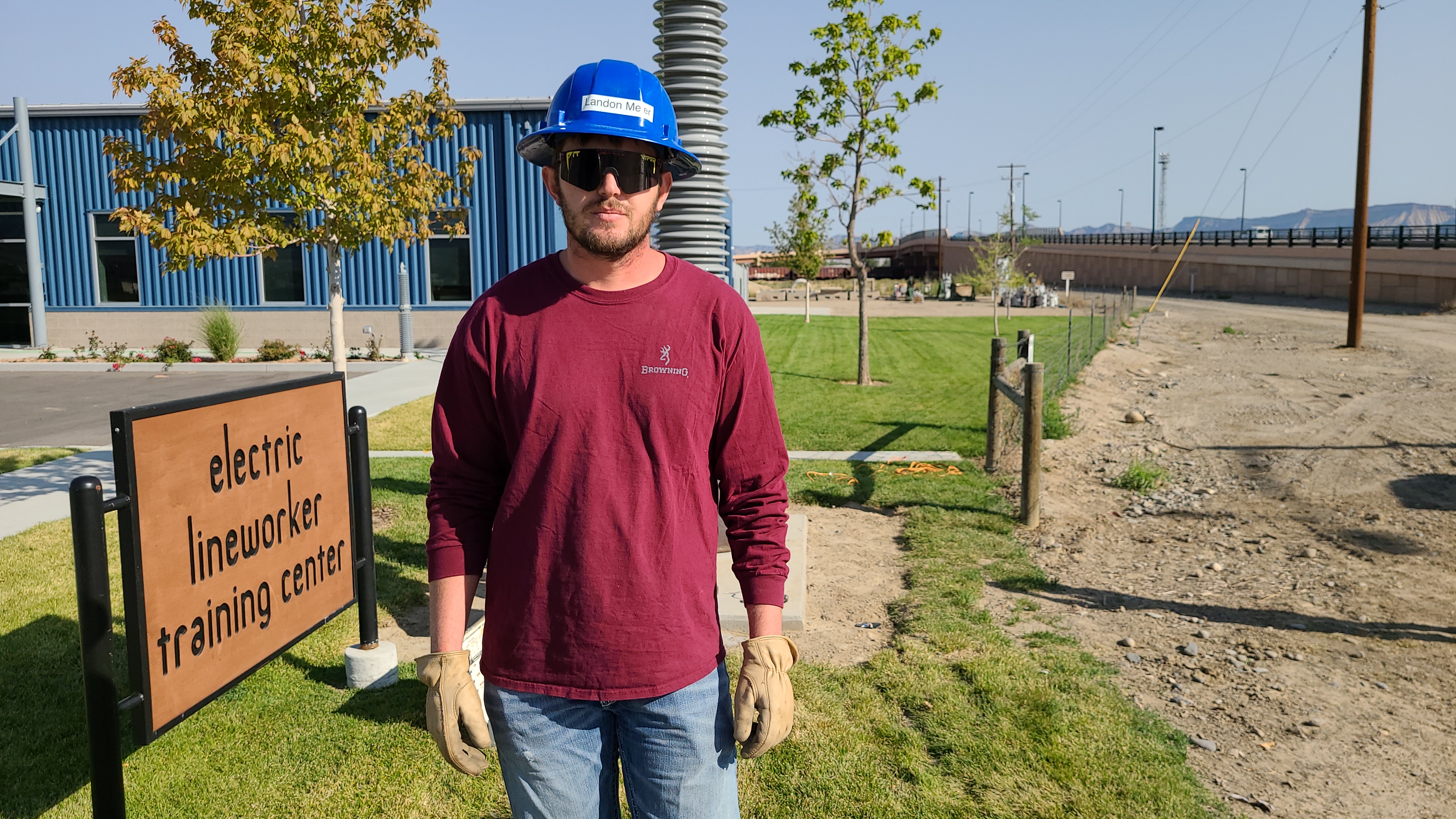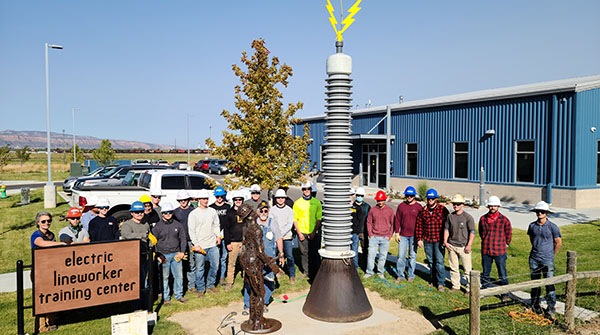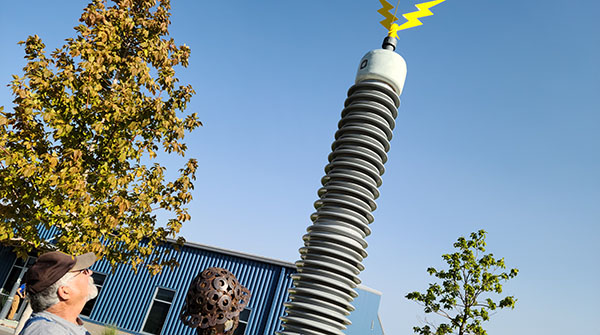WCCC Electric Lineworker program gets artistic
Lyle Nichols is known nationally and is cherished throughout the local art community for his eclectic style and fusion of unlikely combinations in his sculptures. His most recent work was placed at the university's Electric Lineworker Training Center operated by Western Colorado Community College, a division of Colorado Mesa University.
Many sculptures by Nichols fuse together subcultures often thought of as very different. Industrialization and art are usually perceived as distinct human pursuits. Art is a reflection of human ideals, beauty and experiences, while industrialization sometimes engenders a gritty, less inspiring expenditure of human creativity.
In his work Nichols challenges this distinction. Presenting himself in the humble attire of denim overalls and a John Deere baseball cap, much of his art requires welding, grinding, melting, drilling and even needs hydraulic power to move. His working materials are not paint brushes or graphic design software packages, and his sculptures are not created in a traditional studio. Nichols' gallery is filled with tools and agricultural and industrial fragments more likely to be bought at a farm auction than an art supply depot.
For Nichols, there is common ground between trade artisans — like plumbers, electricians, mechanics, electric lineworkers — and traditional artists. He believes there is "a bit of art in every trade" and hopes his work reflects this belief.
Few commodities in human history better represent industrialization than electricity. There are no places on earth that are industrialized that do not have an abundance of flowing electrons. Electricity supports construction of modern cities, manufacturing of goods, urbanization, egalitarian life and even diminishes the practical distinction between day and night. All of these developments are made possible, in part, by the electric lineworkers and students at Western Colorado Community College.
Training people to deliver electricity safely and reliably is the easiest way to explain WCCC's Electric Lineworker Program. While the facility is filled with students busily learning how to maintain the U.S. electric grid, all of them stopped to take part in hoisting and fastening Nichols' sculpture now permanently displayed at the entry of the center.

Lyle Nichols was pleased at the successful event and, at the age of 72, did the bulk of the installation himself.
"I believe that everybody's profession is a form of art," said Nichols. "I couldn't do what they do, and they probably wouldn't want to do what I do. I just believe this art should be part of our history and should be right here for our lineworkers to enjoy."
The new sculpture is a human form made up of industrial components like washers, nuts, bolts, screws, wrenches, ratchets, nails and a host of items manufactured from the art of metallurgy.
The anthropomorphic, tin-man figure stares up at a lightning bolt in wonder. The lightning bolt and human figure are connected through the protective buffer of a giant insulator. The insulator is a bridge between the natural raw power of electricity and the people who use it in homes, businesses and universities. Within the sculpture, the metallic line worker is staring at the lightning bolt assessing what challenges must be overcome to harness its power. This basic assessment is the same one conducted each day by electric lineworkers.
Western Colorado Community College Vice President Brigitte Sundermann also stared up in wonder at the new sculpture while expressing appreciation that art is valued not just at CMU's main campus, but also at an auxiliary WCCC facility located in the heart of an industrial area.
"The fact that CMU values placing art not just in the traditional campus setting, but in all its buildings and campuses says a lot about the values of the university, and its community college division," said Sundermann. "We place art in places where it can enrich the lives of people."
Commissioning the sculpture began in 2019 when CMU's art committee member and CMU Foundation employee Tina Kleespies met with Nichols and asked what ideas he might have to express the societal value of electric lineworkers and their profession. The committee discussed Benjamin Franklin and his famous kite and lightning experiment and then agreed the historic discovery of electricity's potential might be a nice way to symbolize the import role that electric lineworkers play in modern society.
Over the course of the next year, Nichols continued working on the sculpture and, on September 15, 2020, his industrial masterwork was installed using a crew of student lineworkers, an electric lift truck and a handful of power tools. Nichols is retired but agreed to commission the display to support the students.
"To make something that complements the lineworkers' school is very special to me," he said.
CMU Foundation Vice President and CEO Liz Meyer was excited about the display because she believes the investment will show regional electric providers and utilities just how much respect WCCC and CMU have for the essential nature of the lineworker profession.
"Investing in this sculpture will provide confidence for our business partners that they can invest back in our program knowing the scholarships, equipment and training they provide are valued," said Meyer.



